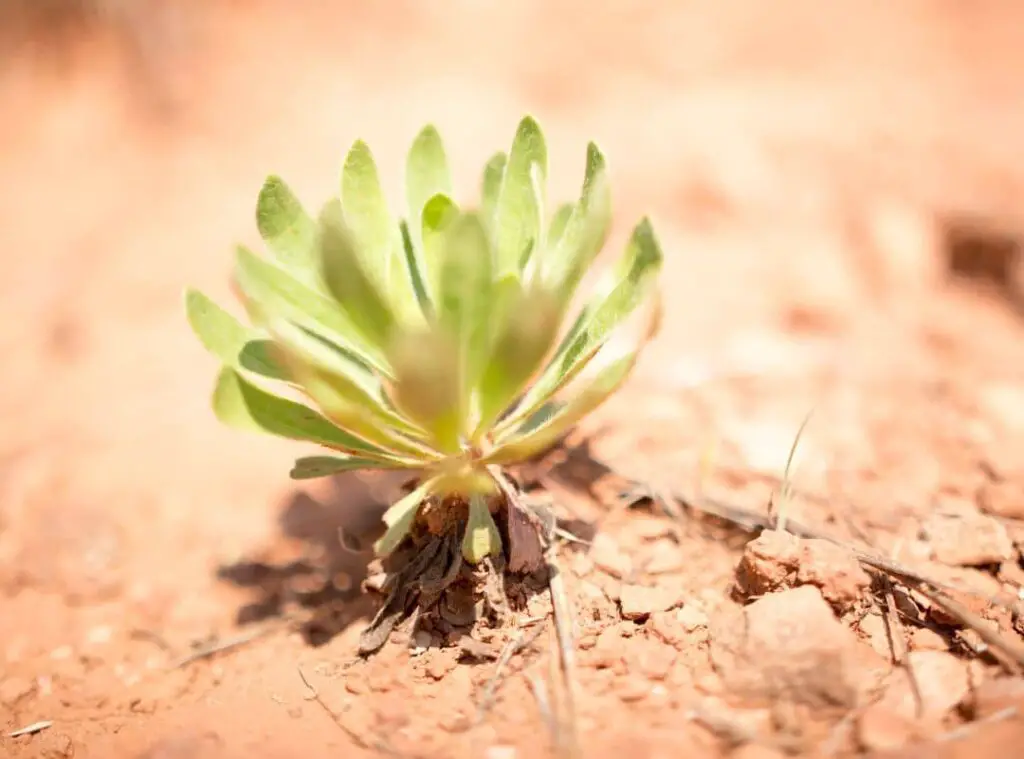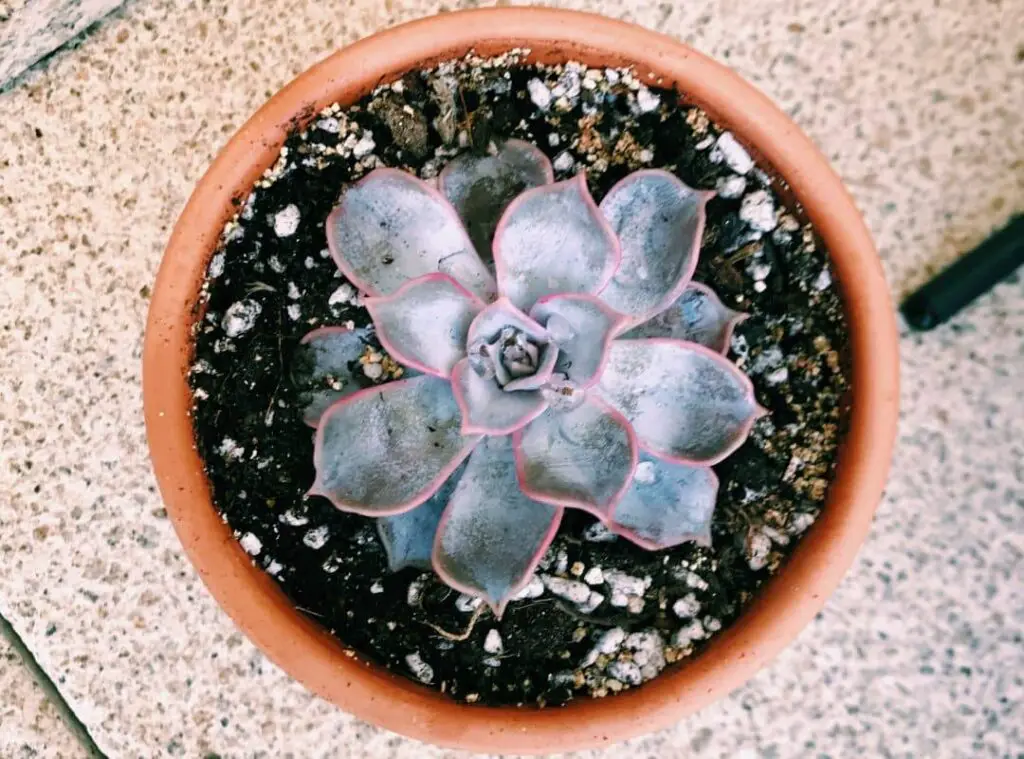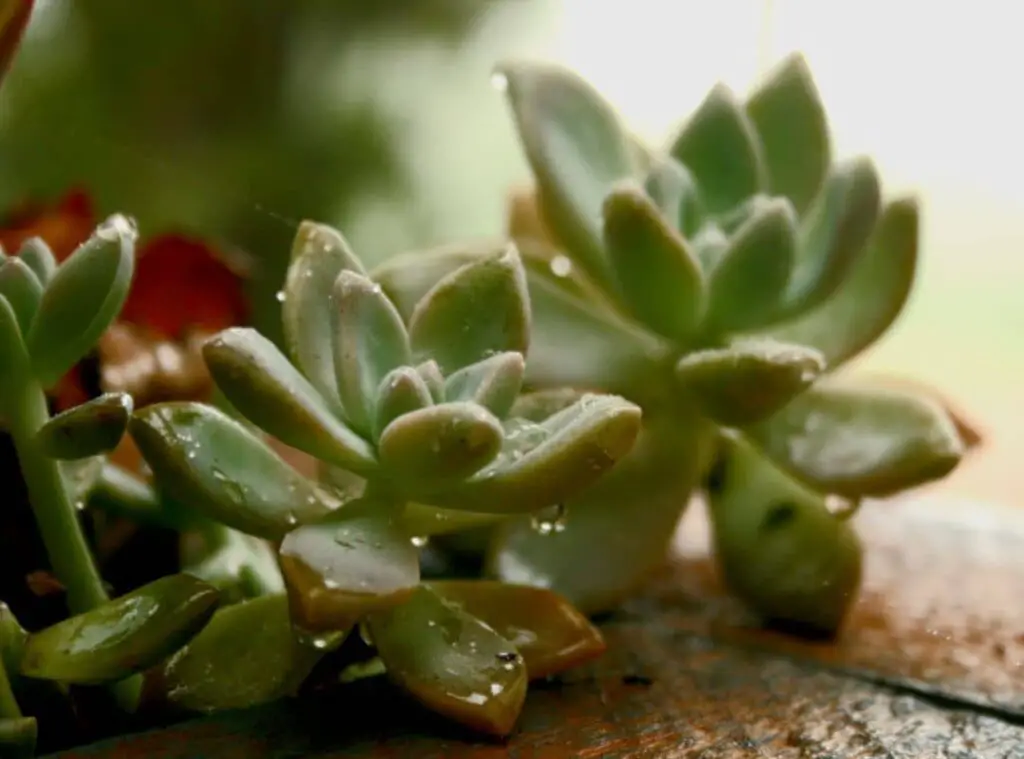To answer the question first Succulent edema is not a disease. However, it is the result of an imbalance of a plant’s transpiration process. In fact, it is a disorder and not a disease
If you have noticed brown spots on the succulents and are wondering how to prevent them, this article would be useful for you. This is the disorder which you can call edema.

There could be several factors which result in rough spots, bumps, blisters on the succulent and you could spot them in various colors such as in brown, red, white, yellow or in black.
If you figure out that your succulents are suffering edema , it is not fatal. It is in fact an indication to let you know that there are lapses in the care and you need to rectify them to avoid further repercussions.
Transpiration and edema
As aforesaid, succulent edema is a disorder, and it is a result of an imbalance in plants transpiration process.
Transpiration literally means the process of water movement through plants. Usually, the succulent roots absorb the water from the soil, and it reaches the stems, leaves and each cell of the plants.
Ultimately it will release from the leaves and from the stems as well. The distribution of essential elements for the plant’s growth such as water, minerals, oxygen circulating to the tissues of the plants is the transpiration process. This is a quite important process for a succulent’s survival.
The plants release too small water droplets, and it is difficult to spot them with your naked eye. If you want to identify the amount of transpired water , you can use a zip lock bag and place it over the plant whilst exposing the plants for full sunlight.
You need to select a branch which has plenty of leaves to cover it with the bag. You can seal the bag with some twine.
You can leave the bag for about half an hour, and you will see how the water is collected in the bag after that. It happened due to the plant’s transpiration. This is a critical process of the plant’s growth.
When your succulents are suffering from edema you will see the small scars on the plants leaves. Those scars are rough and tend to look like cork. Chances are that they form with blisters also.
Those scars are small and tend to have irregular shapes as well. They will appear in white, yellow, red or in black colors. This is a commonly spotted disorder among the succulents.
If your succulents absorb water through its roots faster than the rate, they can process it and release through the leaves, your plants may experience succulent edema condition.
If you consider root rot, what happens there is roots drown and start to rot when you expose the plants roots to excess water.
When your succulents are suffering from edema, healthy roots absorb water faster and releasing them to the atmosphere will be somewhat slow.
When an overwatered succulent’s interior cells start to burst with lot of water , edema will make only few cells near the skin burst. There is a high probability for these cells to be weak and bruised and only then they will experience the conditions related to edema.
Succulents are different from the general plants as they can conserve water and they can use them for future purposes.
So, they are evolved to absorb more water than the water they can process. So, if you spot any signs of succulent edema, it is literally due to the imbalance of transpiration.
You can assume that the succulent water storage system has become imbalanced. When your precious succulents are suffering from succulent edema, the water building up pressure makes the plant’s cell walls stretched.
Ultimately, they will collapse. Eventually it will result in irregular bumps or blisters in the plants. So, if you go through this article, you will be able to understand what succulent edema is, how to identify it and what are the treatments you could do to make your succulent healthier and happy.

What causes succulent edema?
As aforesaid, succulent edema is caused due to imbalance of water transpiration. However, the root causes for this condition are as follows.
The environmental conditions such as air temperature, soil temperature, humidity and air circulation are some of the factors which affect the rate, efficiency, and the balance of transpiration.
- Faster absorption of water when the soil is warm
- Excess water in the soil. When there is too much water in the soil, it makes the healthy roots absorb more water and consequently they take more water faster.
- High levels of humidity of fog. If there are high humidity levels and fog around the plants, it will slow down the water release activity from the plants to the air.
- Closer temperatures around the plants also slow down the water release rate to the air.
- Poor aeration also impacts the plants to release the water slowly.
- Finally, improper fertilization could also make the plants encounter edema.
Out of all these, the most frequently spotted root cause for the succulent’s edema is excess water in the soil in a cool or a humid atmosphere.
How to identify succulent edema?
One of the significant features of succulent edema is their brown spots. However brown spots could be a result of some other issues.
In fact, it could be due to insect attacks, or sunburns. In fact, edema damaged succulents have a close resemblance to the plants which are damaged by thrips and the spider mites .
However, if you need to ascertain what exactly has caused the brown spots in your plants, you need to use a powerful magnifying glass.
When you use the powerful magnifying glasses, it will enable you to identify if your brown spots have legs. Furthermore, it will allow you to identify whether those brown spots are a defect in the skin. If you find a defect in the skin, it could be mainly due to succulent edema.
However, you do not need to use these to identify whether your plants are suffering from sunburns or from edema as you can easily identify these two easily.
Usually if there is a sunburn , it will occur in a wide area. You could commonly spot it in the area which is exposed to most sunlight.
Usually, the sunburns are typically flat and smooth. On the other hand, the scars of edema raise in blisters. If we consider a typical sunburnt leaf, it will have one brown swath and a burned skin.
There could be multiple leaves which suffer from burning and it is very unlikely that you could spot multiple burns on a single leaf.
On the other hand, if your succulents are suffering from edema, it could be a one individual small scar or a bunch of little scars which appear randomly.
Besides, chances are that the edema blisters will form underneath the leaves as well. Sunburns will always appear on the sun exposed layer of the leaves.

Will plant edema go away?
If we consider the mildly affected succulents from edema, they can recover well. They can produce new growth during late spring or in early summer.
Succulent edema treatment
When treating the succulent edema, keep in mind that it is not a disease. It is not a bacterial infection, or a viral infection and they are not contagious.
It is a disorder and a type of injury. It is not a sickness. Above all it is not contagious too. Succulent edema is an indication type they send out to notify you on the plant’s growth.
However, the scars the plants get from edema will remain on them forever. You cannot get rid of those marks despite what you do. The only thing you could do is to get rid of the entire leaf.
Your plants will outgrow those scars and will grow if you manage to rectify the succulent edema condition. All you need to do to correct the succulent edema condition are as follows.
- Ensure that you are using a fast-draining succulent soil mix. That will consequently help the plant to avoid having any water build ups in the soil.
- Proceed with containers which have sufficient draining holes. That will make sure that your plants do not stay in waterlogged conditions.
- Always keep the plants dry. Further water the plants only when their soil is dry only.
- Supply a good aeration for the plants be it indoors or outdoors you plant them.
- Do not over feed the plants at any time. If you feed them when they are dormant, it will make the plants go through edema.
- I suggest you to not water the succulents with warm water, especially if you live in cool and humid conditions.
If you adhere to aforesaid guidelines, you can correct the succulent edema. Simply if you come across the brown spots on your succulents and if you realize they are due to succulent edema, you simply have to reduce watering them and enhance the light conditions as well as the aeration.

Conclusion.
To conclude, hope now you know what you should do to remedy the succulent edema. Trust the aforesaid facts were useful for you to enhance your knowledge and now that you are confident .
Further hope now you know how to correct the succulent edema condition whenever you come across any.
Succulents are such a versatile hardy set of plants which thrive well with minimum supervision from you. However, they are prone for disorders such as edema.
Despite being non-fatal, it is always best to prevent them from occurring. When you attend to it and correct this condition, you can avoid any potential severe repercussions.
Read Next : Adromischus Marianiae Hallii Care |Facts No One Talks About|
